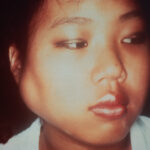 EULAR 2023—Dazodalibep is a non-antibody biologic antagonist of the CD40 ligand for managing the signs and symptoms of Sjögren’s disease. In a phase 2 clinical trial, this investigational agent was evaluated in patients with Sjögren’s disease and a high level of symptom burden.1 During EULAR 2023, Milan, Italy, May 31–June 3, data from the study were presented by Chiara Baldini, University of Pisa, Department of Clinical and Experimental Medicine, Italy.
EULAR 2023—Dazodalibep is a non-antibody biologic antagonist of the CD40 ligand for managing the signs and symptoms of Sjögren’s disease. In a phase 2 clinical trial, this investigational agent was evaluated in patients with Sjögren’s disease and a high level of symptom burden.1 During EULAR 2023, Milan, Italy, May 31–June 3, data from the study were presented by Chiara Baldini, University of Pisa, Department of Clinical and Experimental Medicine, Italy.
Background: Sjögren’s disease is a chronic, systemic, autoimmune disease that can occur alone or with other autoimmune conditions, such as rheumatoid arthritis (RA) or lupus. The disease can manifest with symptoms of dryness, pain and fatigue, which can be assessed using the validated EULAR Sjögren’s Syndrome Patient Reported Index (ESSPRI). These cardinal symptoms are assessed by domain on 0–10 numerical scales, with the final score being the mean of the scores of each domain.1-3
Patients with Sjögren’s disease who have a high level of symptom burden independent of systemic involvement have been under-represented in clinical trials, notwithstanding overall unacceptable health status and significant disease burden. Therefore, in this study (NCT04129164), St.Clair et al. evaluated the efficacy and safety of dazodalibep in adult patients with Sjögren’s disease who have an unacceptable symptom burden and limited systemic organ involvement.4 This trial also evaluated the efficacy and safety of dazodalibep in patients with Sjögren’s disease and moderate-to high levels of systemic disease activity as defined by an ESSDAI score of ≥5. Those results were reported separately at this meeting.
Methods
This double-blind, crossover study compared intravenous (IV) dazodalibep with placebo in adult patients with Sjögren’s disease, an ESSPRI score of ≥5 (i.e., moderately active disease) and a EULAR Sjögren’s Syndrome Disease Activity Index (ESSDAI) score of <5 (i.e., mild to moderate disease activity).
In the study, 109 eligible subjects were randomized in a 1:1 ratio to receive 1,500 mg of IV dazodalibep (n=54) or placebo (n=55) every two weeks for three doses, then every four weeks for an additional four doses. On day 169, the participants who initially received dazodalibep were switched to placebo every four weeks for five doses. Meanwhile, patients who initially received placebo were switched to IV dazodalibep every four weeks for five doses. Participants were then followed for 12 weeks.
The primary end point was the change from baseline in ESSPRI scores at day 169. Safety was also evaluated.
Results
The mean age of the study subjects was 49.9 ± 12.1 years (standard deviation), and most were women (94.5%).


